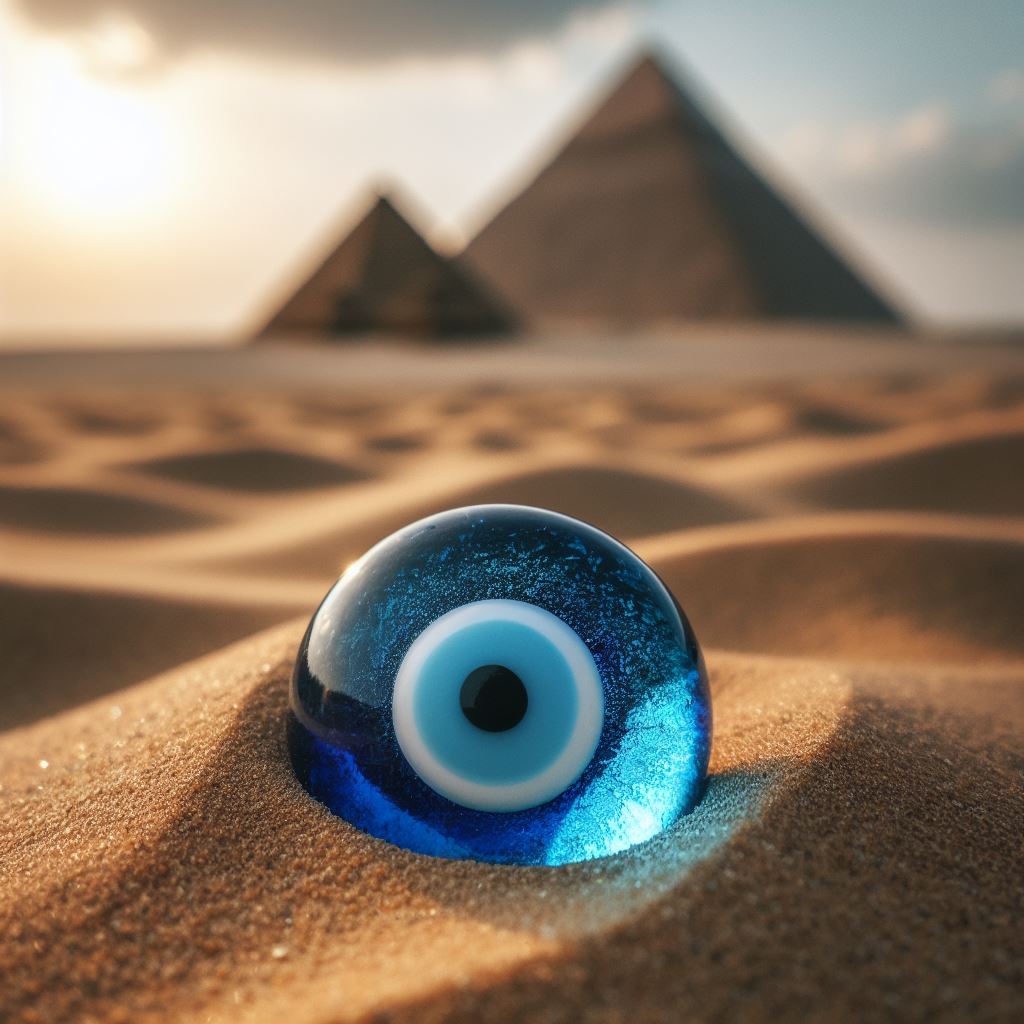Gaze into the Unknown: Unraveling the Mystery of the Evil Eye
Introduction:
Have you ever felt the prickling sensation of someone's envious gaze? It's a belief that transcends time and culture—the Evil Eye. Join us as we embark on a journey to uncover the secrets behind this ancient and enigmatic phenomenon and delve into its profound evil eye meaning.
Sections:
- The Origins of Obscurity
- Deciphering Symbolism
- Echoes Across Cultures
- Unveiling the Envy Within
- The Legacy of Ancient Greece
- Embracing Tradition: The Power of Evil Eye Silver Jewelry
- From Amulets to Avatars
- How Do the Greeks Cast Away The Evil Eye - Mati ?
- Conclusion
Section 1: The Origins of Obscurity
The Birth of Belief: Tracing the Roots of the Evil Eye
The origins of the Evil Eye are shrouded in mystery, stretching back to ancient civilizations and enduring through the annals of human history. To understand its enigmatic nature, we must journey back to the dawn of civilization, where the seeds of belief were first sown.
Ancient Mesopotamia:
- In ancient Mesopotamia, the concept of the Evil Eye was already ingrained in the collective consciousness.
- Protective amulets and rituals were designed to ward off its malevolent influence.
Egypt:
- In the deserts of Egypt, the Evil Eye was seen as a potent force, capable of bringing harm and misfortune.
- Protective amulets and symbols were widely used to ward off its influence.
Persia:
- In the mountains of Persia, intricate talismans and charms were crafted to deflect the Evil Eye's influence.
- Protective rituals were performed to safeguard against its malevolent intentions.
Greece:
- In ancient Greece, the Evil Eye, known as "βασκανία" (baskania), held a prominent place in folklore and superstition.
- Protective talismans and rituals were designed to ward off its influence and protect against misfortune.
- The Evil Eye was often depicted in Greek art and literature as a symbol of both fear and reverence.
- The eye symbol was also prominently featured on Greek ships, known as the "eye of the ship" or "nautilus," serving as a protective talisman during voyages across treacherous seas.
- In Greek culture, the term "mati" is commonly used to refer to the Evil Eye. It embodies the belief in the malevolent gaze of envy and serves as a reminder of the protective measures taken against it.
Turkey:
- In the bustling bazaars of Turkey, the Evil Eye, or "Nazar," is a ubiquitous symbol of protection against envy and malevolence.
- Adorning everything from jewelry to household decorations, the Nazar is believed to bring good luck and ward off the Evil Eye.
As civilizations flourished and traded knowledge, the belief in the Evil Eye spread across continents, evolving and adapting to each culture's unique worldview.
From the deserts of Egypt to the mountains of Persia, traces of the Evil Eye can be found etched into the fabric of ancient societies, leaving an indelible mark on human civilization...
Section 2: Deciphering Symbolism
Peering into Symbolism: Unveiling the Layers of the Evil Eye
Like a prism refracting light, the Evil Eye symbolizes a spectrum of meanings. Protection against malevolence, a beacon of hope in darkness, or perhaps a mirror reflecting our deepest fears—each interpretation reveals a facet of our collective psyche and the underlying evil eye meaning...
Section 3: Echoes Across Cultures
Cultural Threads: Exploring the Evil Eye's Global Influence
Step into the bustling bazaars of Turkey, the sun-drenched streets of Greece, or the labyrinthine alleys of Morocco, and you'll find the Evil Eye's watchful gaze following you. Across cultures, it weaves a tapestry of belief, connecting humanity through shared superstitions and traditions, each imbued with its unique evil eye meaning...
Section 4: Unveiling the Envy Within
Psychological Insights: Understanding the Evil Eye Phenomenon
But what lies beneath the surface of this age-old belief? Psychologists delve into the depths of envy, superstition, and the power of suggestion, unraveling the intricate web of human behavior woven around the Evil Eye and its underlying evil eye meaning...
Section 5: The Legacy of Ancient Greece
Tracing the Evil Eye in Ancient Greek Mythology
In the rich tapestry of ancient Greek mythology, the Evil Eye held a prominent and multifaceted role. Known as "βασκανία" (baskania) or "βασκανός" (baskanós) in Greek, its influence permeated both mortal and divine realms, leaving an indelible mark on the cultural landscape...
Section 6: Embracing Tradition: The Power of Evil Eye Silver Jewelry
Sirioti Jewelry proudly presents its exquisite Evil Eye Silver Jewelry collection, a fusion of ancient symbolism and modern craftsmanship. Each piece is meticulously crafted to capture the essence of protection, warding off negativity while inviting positive energy and blessings into your life...

Section 7: From Amulets to Avatars
Modern Manifestations: The Evolution of the Evil Eye
In today's digital age, the Evil Eye transcends the physical realm, manifesting in pixels and pixels. From Instagram feeds adorned with blue-eyed emojis to online marketplaces brimming with talismans, its presence is palpable in our virtual world, each representation reflecting its enduring evil eye meaning...
Section 8: How Do the Greeks Cast Away The Evil Eye - Mati ?
The Greek Approach to Dispelling Envy and Misfortune
In Greek culture, the belief in the Evil Eye, or "mati," is deeply ingrained, and various traditions and rituals have evolved over centuries to cast away its malevolent influence.
1. Blue Eye Amulets (Mati):
- One of the most common methods used by Greeks to ward off the Evil Eye is the blue eye amulet, known as "mati."
- These amulets, typically made of glass or ceramic, depict a blue eye and are believed to absorb the negative energy of the Evil Eye, protecting the wearer from harm.
2. Rituals of Purification:
- Greeks may perform rituals of purification to cleanse themselves or their homes from the effects of the Evil Eye.
- These rituals often involve the use of water, salt, and olive oil, symbolizing purity and protection against negativity.
3. Spitting Three Times:
- Another traditional Greek method to cast away the Evil Eye is the act of spitting three times.
- This practice is believed to ward off the malevolent gaze and protect against its harmful effects.
4. Prayer and Invocation:
- Prayer plays a significant role in Greek efforts to dispel the Evil Eye.
- Individuals may recite prayers invoking divine protection and guidance, seeking to shield themselves and their loved ones from envy and misfortune.
By adhering to these traditional practices and rituals, Greeks seek to safeguard themselves and their communities from the malevolent influence of the Evil Eye, ensuring prosperity, happiness, and well-being.
Conclusion:
Reflecting on the Gaze: The Profound Meaning of the Evil Eye
As we gaze into the abyss of the Evil Eye's mysteries, one thing becomes clear—it's not just a superstition, but a reflection of our shared humanity. So the next time you feel its gaze upon you, remember that within its depths lies the essence of our fears, hopes, and dreams, and the profound evil eye meaning that resonates across time and culture...
Other related posts


1 commento
A great reminder of my own Greek heritage. Was just now given as a gift from someone visiting Greece.